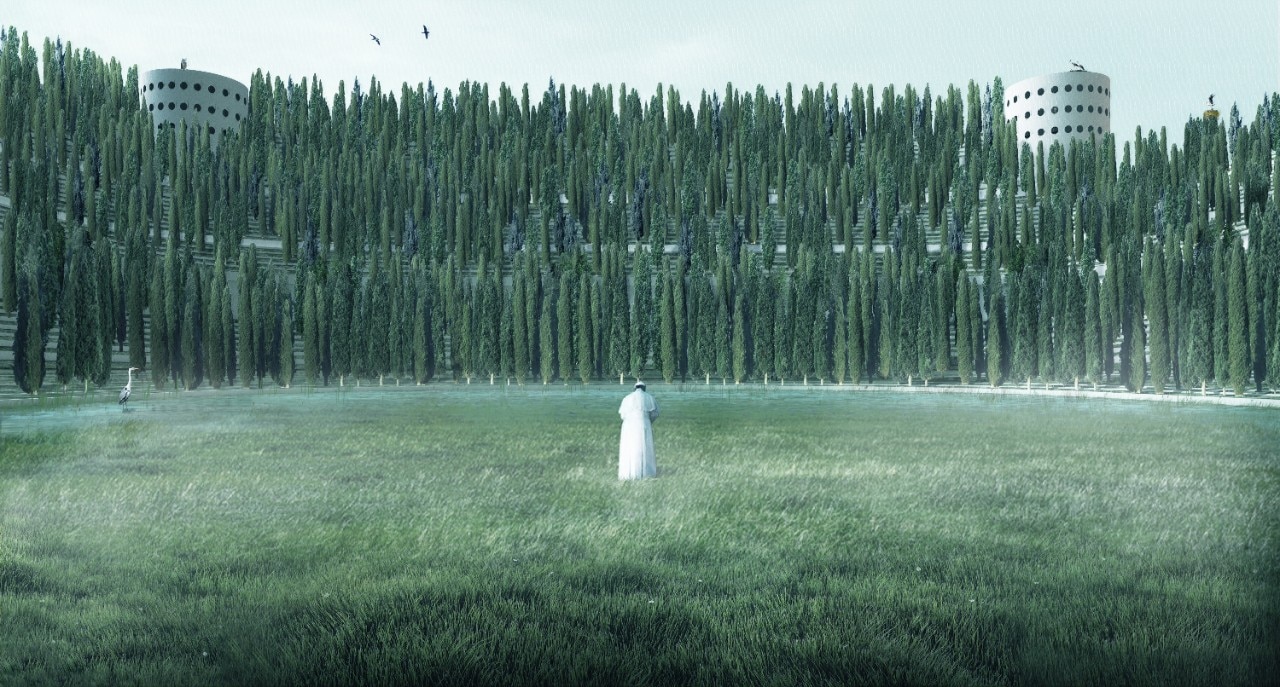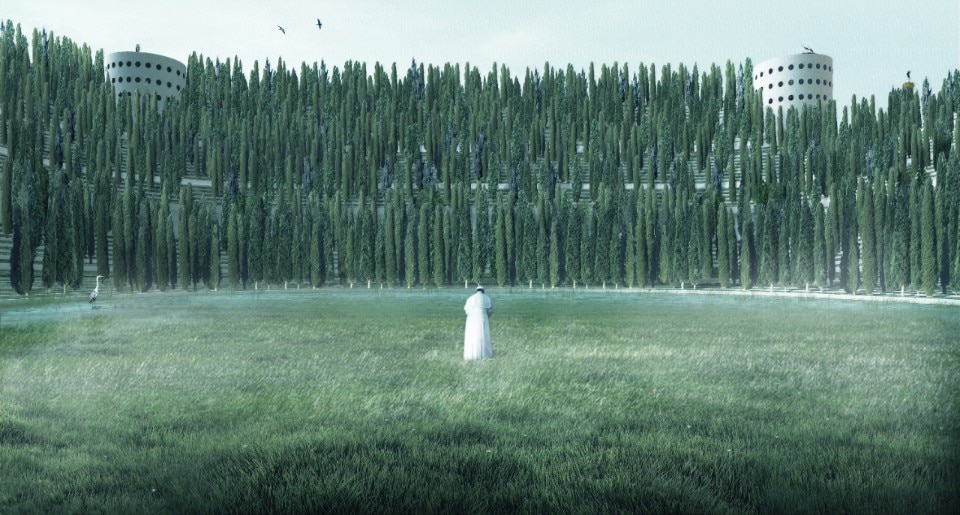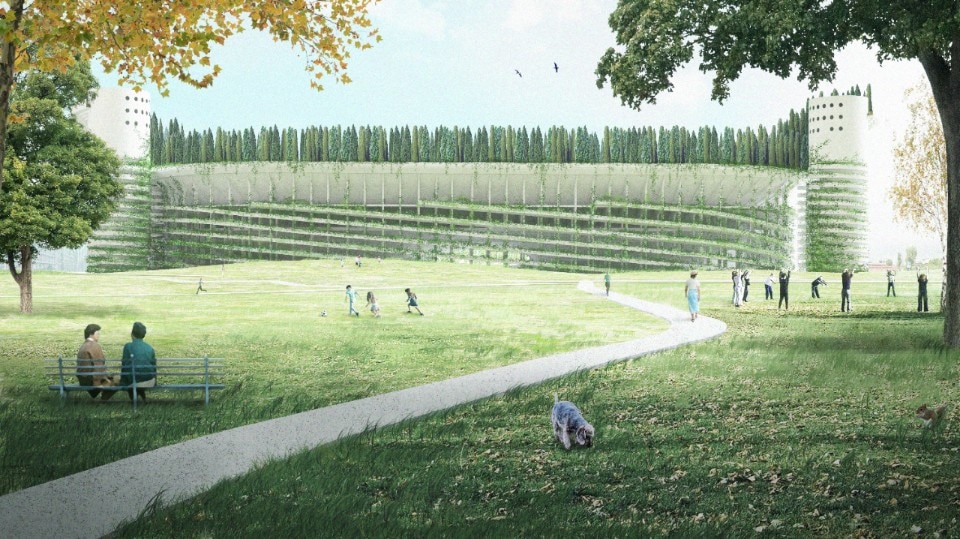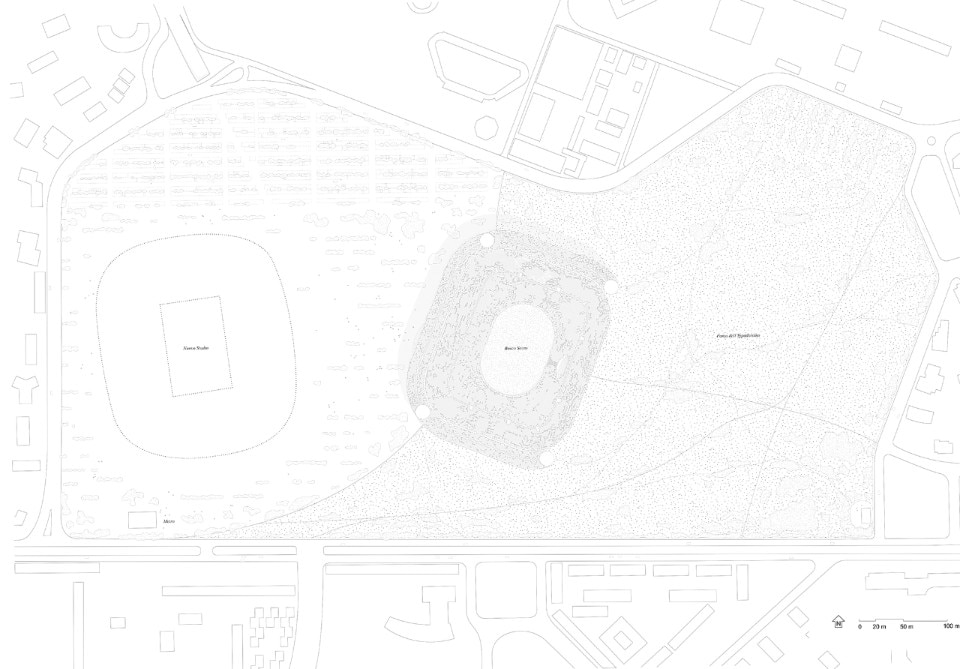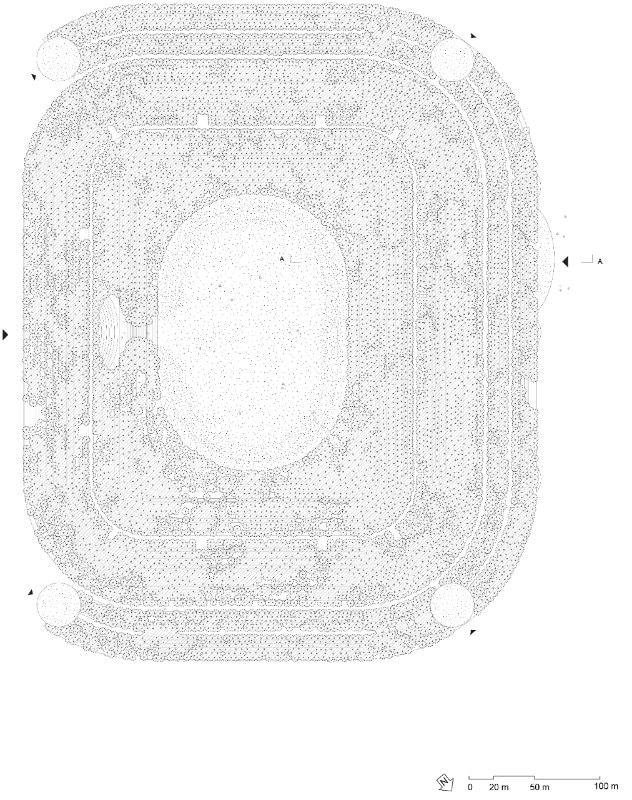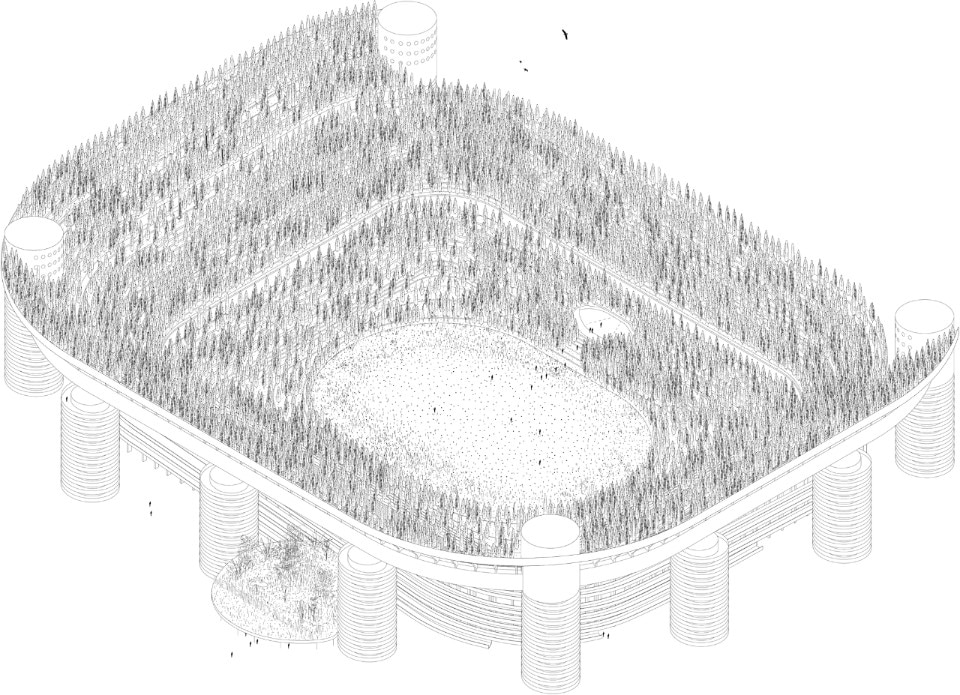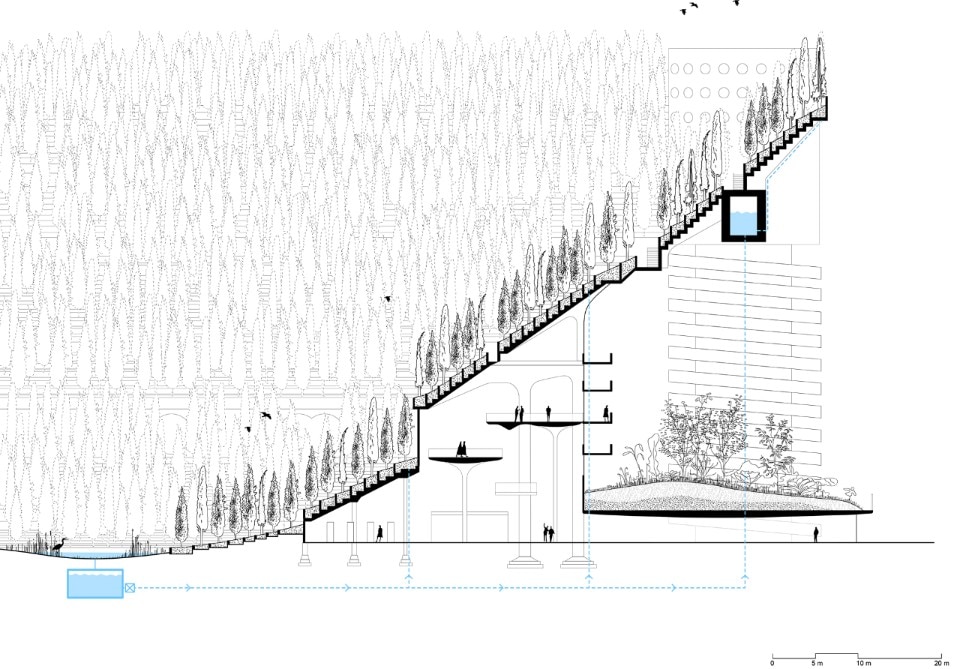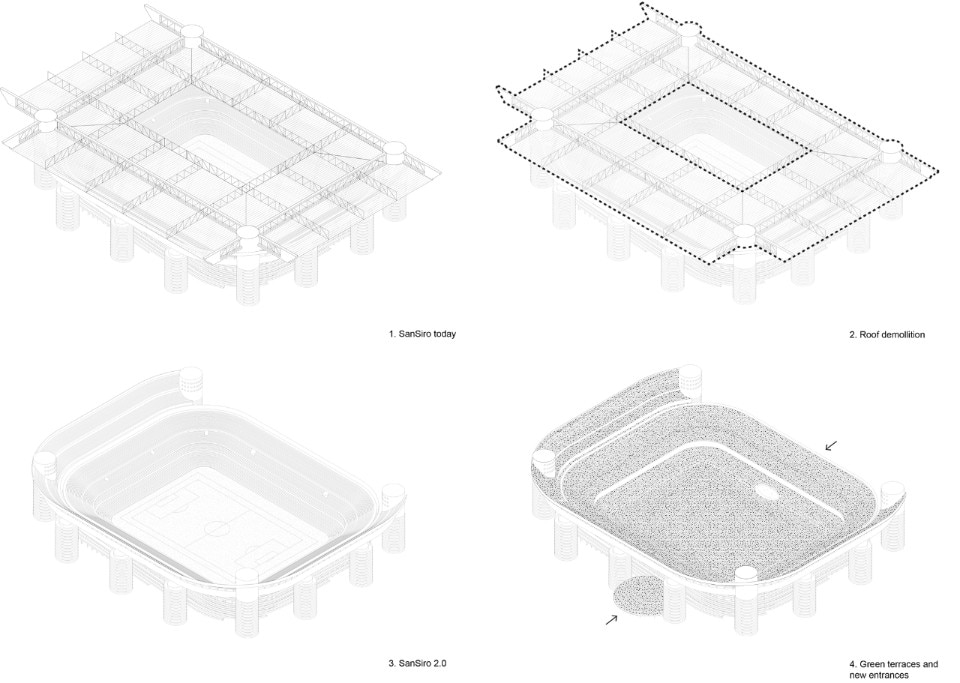This article was originally published on Domus 1062, November 2021.
Our project proposes to save the legendary San Siro stadium from demolition by converting the whole structure into a place for commemorating the victims of Covid-19.
Named after Giuseppe Meazza, the stadium stands on the outskirts of Milan and is one of the world’s largest and most important soccer venues. Construction began in 1926 to a design by the architect Ulisse Stacchini, who devoted it exclusively to football. Between 1948 and 1955, a project undertaken by engineers Armando Ronca and Ferruccio Calzolari raised the capacity to seating for 60,000 and standing room for 25,000. The last major refurbishment was for the 1990 FIFA World Cup, when a roof was added and the capacity was increased to seat 85,000 spectators.
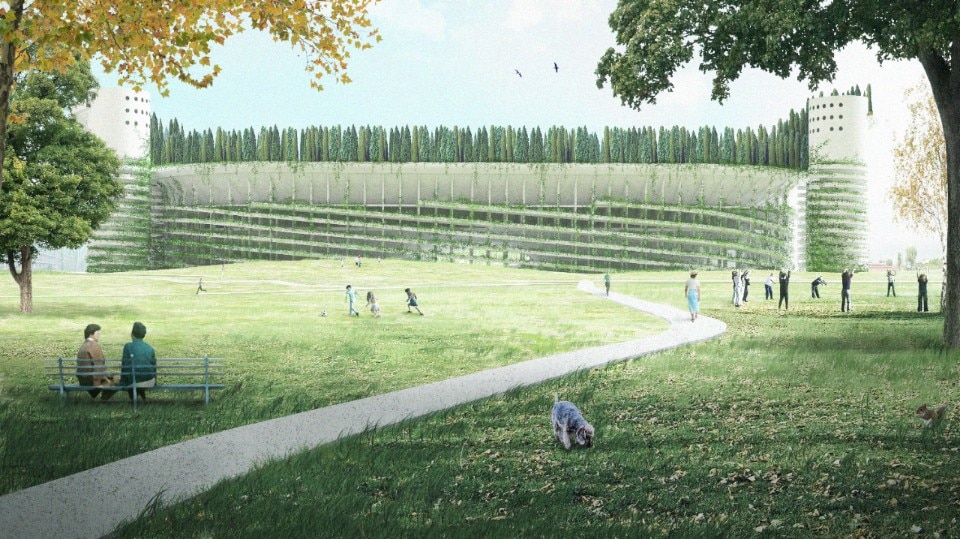
In 2019, AC Milan and Inter launched their proposal to tear down the stadium and build a new one with 60,000 seats on the same site. The municipality asked for the opinion of Lombardy’s Cultural Heritage Office. Its recently released report states that “Giuseppe Meazza Stadium (San Siro) has no cultural interest and as such is not protected”. Although the heritage office’s go-ahead is not the final decision, it opens up the real possibility of the stadium’s demolition. This prospect prompted our idea to transform the stadium into a place to commemorate the victims of Covid-19. In Italy, the pandemic has claimed over 130,000 lives, and Milan has been among the cities worst hit.
Our proposal envisages the grandstand’s conversion into green terraces with thousands of cypresses (Cupressus sempervirens) planted along new retaining walls. Cypresses are common ornamental trees that have been grown throughout the Mediterranean for millennia. Their tall, dark green conic shape is a characteristic presence in cemeteries and sacred spaces, symbolising immortality and life after death. Their dense foliage is also the habitat of many birds, dormice, squirrels, lizards and other creatures.
Our project includes the complete demolition of the roof to allow light and rain to reach the ground. Beneath the grandstand, new spaces will be created to host new programmes, such as a museum, research centre and workshops for students and researchers. At the base of the current pitch, a perimetric basin will be laid out to collect rainwater, which will be stored in underground tanks and reused for irrigation. In the event of heavy rain, the basin will help to carry off excess water and support the creation of habitats for biodiversity.
- Project:
- San Siro 2.0
- Architect:
- Angelo Renna
- Design phase:
- 2020


